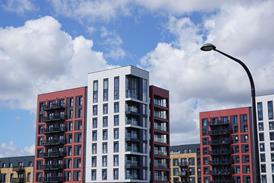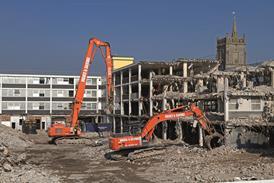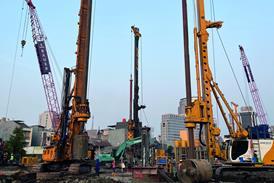VMD is a complicated subject. There are indoor systems, outdoor systems, analogue and digital; even cameras and recording systems that offer some form of built-in motion detection. To see where it may be used to good effect, it's important to understand how the different systems work, and to know their limitations.
There are fundamental differences between the requirements of motion detectors for indoor and outdoor use. For example, lighting conditions will be different, there will probably be a larger number of moving objects seen by an outdoor camera, and PTZ cameras pose a problem as the field of view is constantly changing. This creates difficulties not only for VMDs that work by pixel differencing, but also for systems with detection areas that have been zone masked, as the mask will move with the camera and could prevent detection in a vital area.
INDOOR VMD
Detecting motion indoors is relatively simple. Generally, camera scenes will be more 'sterile', with a lot less unexpected movement than outdoor scenes. There is less chance of extreme shadows, no camera shake from strong winds, no rain or snow and, hopefully, no wild animals! Lighting indoors is generally more constant, from a stable electric source, and at certain times of the day, for example, at night, very little activity would be expected.
Such sterile indoor scenes are often fairly well suited to using cameras or multiplexers with built-in motion detection, many of which work on pixel differencing. To detect movement, it is necessary to detect differences between images. Differences may be detected simply by taking two digitised images and subtracting one from the other, pixel by pixel. By counting the number of pixels significantly different from each other, a measure of overall scene change may be calculated.
However, a difference may not be due to movement – lighting conditions over the whole scene may have changed by lights being switched on, for example, or by the amount and intensity of natural light entering the building. To reduce the effect of lighting changes, the 'reference image' should be regularly updated, but doing this too regularly can lead to subtle movement going unnoticed.
Similarly, simply counting the number of different pixels provides no information about where in the image the differences were – they could all have been in the same region due to a single object moving, or they could have been widely dispersed due to many small objects moving around.
Another problem with this simple approach is that it is very sensitive to camera shake or image zooming – any small movement by the camera effectively changes the whole scene and so produces a large number of different pixels. But for situations with a fixed camera, consistent lighting and a fairly stable indoor scene, motion detection by pixel differencing is acceptable.
OUTDOOR VMD
Digital-based motion detectors for indoor use have been around for as long as 20 years. Then, about ten years ago, these same systems were applied to monitoring of outdoor scenes, but manufacturers' claims exceeded the results subsequently achieved.
Camera shake, changing environmental conditions and scenes with many moving objects all presented old-style VMDs with problems that were hard to overcome. The high levels of false alarms made most systems unusable, while the more sophisticated systems were, in general, far too complex and time-consuming to set up. Consequently, outdoor VMD gained a poor reputation for performance and reliability.
In the past ten years, however, the developers of more sophisticated VMDs have allowed motion detection to start to fulfill its true potential, particularly outdoors, where natural changes in the camera scene due to sun, clouds, rain, snow, reflections, wind and camera shake can all be responsible for false alarms. Newer systems offer storage of multiple alarm images, detection of non-motion and sophisticated methods of compensation for environmental changes to reduce false alarms.
DIFFICULT CONDITIONS
There are various ways of compensating for changing light levels and conditions. The camera itself usually features built-in automatic gain control, which helps compensate for such changes. Algorithms are used to measure the overall light level, but any light compensation factor can make a VMD less sensitive to the alarm events themselves.
A difficult scenario would be a brightly-lit scene with dark shadows. If the overall light level increases, the resulting effect would be to make the light areas lighter and the dark areas darker (due to automatic gain control). This can be a real problem when trying to detect events in the shadowed region. A simple solution is to use the correct lens on the camera to view the shadowed area alone, and use extra cameras to cover the whole field of view if necessary.
Some systems allow the measurement of light levels in one or more defined place, while others measure the overall light level. Both are useful, but ideally a system should be as flexible as possible, as no two surveillance scenes are identical.
Other environmental problems, such as rain and snow, require a system that has the built-in algorithms and 'intelligence' to actually learn particular patterns of movement and ignore them, avoiding false alarms. Merely adjusting the sensitivity of the system to not respond unless there is a great deal of movement could cause vital events to be missed.
Even today, systems that automatically 'learn' a constantly changing scene are few and far between. Some systems have to be told what patterns to learn, but as soon as another factor, such as rain or high wind, comes into play, they start to false alarm until they are instructed that this scenario should also be ignored.
Of course, this technology does not come cheap. Outdoor motion detectors offer more features than indoor VMD, have more demands made of them and, as a result, cost more money. But buying the right tools for the job really will pay off in the end.
‘Outdoor motion detectors offer more features than indoor VMD, have more demands made of them and, as a result, cost more money. But buying the right tools for the job really will pay off in the end’
ZONE MASKING
Zone masking is a feature that can be seen on both indoor and outdoor motion detectors and is essential when defining select areas of interest in a scene. Different detection systems have different ways of setting up their systems so that an alarm is triggered only if activity is detected in an unmasked area. All events or changes outside of these areas are ignored, with the VMD only calculating differences in small selected areas in the field of view – around doors or fences, for instance – thereby reducing the amount of work. Movement can take place in other parts of the scene, but unauthorised access will still trigger an alarm.
The possibility that the differences may be due to one single large object or a large number of small objects still exists, but zone masking is a particularly useful tool to have if the field of view encroaches on a busy road or footpath.
OBJECT RECOGNITION...
What is needed, particularly for outdoor VMD with its many environmental variables, is for the system to have some knowledge of what is in the scene, such as what is normal, acceptable movement or change in lighting and what constitutes an alarm condition.
In order to retain that knowledge, some form of memory is required. However, it is not practical simply to store a collection of different frames of the same view – apart from the memory requirements, looking at each frame to determine the difference from the most recent image would require an immense amount of processing.
The practical answer is to find some means of representing what is present in the scene, in a compressed format, so that any gross changes may be identified and assessed immediately.
...AND DISCRIMINATION
A VMD also needs to be able to discriminate between normal or uninteresting events that occur and those which the system is intended to detect. The usefulness of a VMD is negated if the rate of false alarms is too high, as the alarms will eventually be ignored or the system switched off.
A good VMD must provide methods of defining where and how an alarm event may occur through zone masking, and an alarm event must be detectable by some kind of change in the sequence of images that are captured. A system also needs to be easy to set up and use.
There should also be a definable minimum or maximum size of object that will trigger an alarm, allowing the system to distinguish between a person and a car, for example. Some of the more sophisticated systems, such as Primary Image's AMETHYST, are able to take perspective into account, and can differentiate between, for instance, a small animal at close range to the camera and a human some distance away.
Tracking of objects moving through the field of view is, in effect, identification and localisation of the movement of an object in every frame. Object tracking requires high processing power and fast analysis algorithms. In such cases, the processing system would normally be dedicated to a single camera, to enable real-time (frame-rate) processing of the video signal. However, a lot of single-camera systems can be rack-mounted and powered from a single supply to enable motion detection over large numbers of cameras.
NOW AND THE FUTURE…
In order to define a motion detector that is best suited to the needs of the specific application, some key questions need to be asked:
It should be compatible with other interfaced items, to integrate within a complete security system. (The best models have an RS232 interface to tie directly into an access control system.
Once these questions have been answered, it will become easier to select the VMD suitable for the application. Already, more sophisticated motion detectors are playing an increasing role in security applications. Systems are now on the market that can distinguish between the movement pattern of humans or vehicles, can detect flow of movement in one direction only, and even automatically steer PTZ cameras to track and follow objects that are moving in the field of view.
Knowledge-based systems that have been closely modelled on biological processes, such as neural nets, will become even more evident in the near future. Expect also to see motion detectors that can search a database of faces, identify a person from that database and trigger an alarm whilst he/she is being tracked by the camera.
What seems like science fiction today, is the reality of the next millennium.
Source
Security Installer
Postscript
Primary Image, Millbank House, 171-185 Ewell Road, Surbiton, Surrey KT6 6AP. Tel: 0181 339 9669; fax: 0181 339 9091; website: www.primary-image.com



















